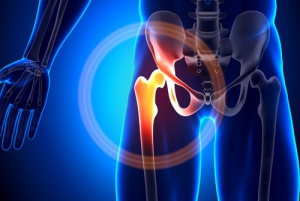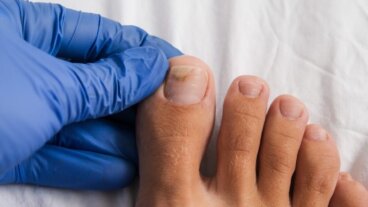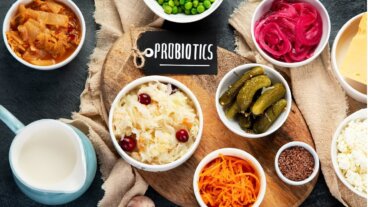Discover 4 Decalcifying Foods


Reviewed and approved by the physiotherapist Sofía Quintana Alonso
Hypocalcemia, as it’s called in medical terms, is very common not only after the age of 40, but also when your diet contains lots of decalcifying foods. Discover them in this article.
What’s hypocalcemia and what’s its effect?
Hypocalcemia is an imbalance in the blood calcium levels. In adults, the normal values are 4.5 to 5.5 mEq/liter. It’s very important to have the right amount of calcium for healthy bones and teeth, as well as for the muscles and nerves to function properly. The body maintains normal levels due to the parathyroid hormone, intestines, and kidneys.
Here are some of the causes of hypocalcemia:
- Lack of vitamin D.
- Chronic renal failure.
- Magnesium deficiency.
- Alcoholism.
- Certain types of leukemia or blood disorders.
- Treatment with bisphosphonates (drugs that treat osteoporosis).
- Medications such as diuretics, insulin, laxatives, estrogen, or glucose.
- Caffeine and carbonated drinks.

Here are some of the most common symptoms of a lack of calcium in the body:
- Neuromuscular irritability. This means the function of the nerves and muscles is affected by cramps or spasms in the arms and legs.
- Numbness, finger pain, and even tremors.
- Depression or irritability.
- Confusion and disorientation.
- Heart palpitations.
- Increased frequency of urination and/or painful urination.
- Weight loss without dieting or exercise.
- Shortness of breath and/or chest pain.
- Swelling of lips.
- Nausea and/or inability to eat.
- Diarrhea that doesn’t go away after two days.
Decalcifying foods
In order to maintain healthy and strong bones, you must know which foods are decalcifying foods. These foods absorb calcium or eliminate it from our body. Here are some of them:
- Animal proteins: On a diet where red meat is predominant, poultry and eggs often have metabolic acidosis. This causes an increased elimination of calcium in the blood.

- Sodium: Eating too much salt increases calcium excretion in the urine. To avoid this, you need to cut down your salt intake and avoid canned foods, salty snacks, pies, processed and ready-made meals, and fast food. You should add less salt when you prepare meals and not take the salt shaker to the table. The recommended amount of salt per day is up to 2 grams.
- Tobacco: Although it’s not a food, it’s a huge decalcifier. People who smoke are more vulnerable to losing calcium, especially women over 40 years old (women who entered menopause).
- Sugary soft drinks: Carbonated drinks aren’t healthy at all. Besides having a lot of sugar and fizziness, they have high phosphorus contents (in the form of phosphoric acid). This mineral in small quantities is good, but it has adverse effects when it comes to sodas. It favors acidosis, just like meat
- Alcohol, coffee, and refined products (bread, rice, flour, and white sugar). They favor the elimination of minerals such as calcium from the body.

Are dairy products decalcifying foods?
Researchers from Harvard University eliminated dairy products from the food pyramid. They concluded that these foods, contrary to popular belief, don’t give our body the calcium it needs.
Did you know that our body doesn’t need milk after the lactation period? This is because it causes acidification in the blood. This means it disturbs the acid-base balance. Dairy products, meat, stress, lack of physical activity, and not drinking enough water also have this effect.

As we stated above, acidification is synonymous with a lack of calcium in the blood. The body tries to balance this irregularity with phosphorus, which is stored in the bones (bones are made up of these two elements). By taking phosphorus and regulating the pH, calcium will be “dissolved”.
Thus, by consuming dairy products regularly, the body will slowly decalcify the bones in order to balance the blood. Here are some consequences of pH imbalance: irritability, poor concentration, chronic fatigue, increased risk of disease, allergies or infections, etc.
Did you know? 10 Foods to Improve Your Concentration

Be careful and make sure you don’t over-consume decalcifying foods
A diet that is too rich in foods that eliminate calcium needs to be complemented with a higher consumption of those that do contribute to increasing calcium levels. This way, you avoid the health issues this may cause.
The problem is that the foods that “eliminate” calcium provide phosphorus, which is vital for the proper functioning of the brain, heart, muscles, tissues, bones. This mineral is also vital for the metabolism of proteins, carbohydrates, and fats for energy.

All cited sources were thoroughly reviewed by our team to ensure their quality, reliability, currency, and validity. The bibliography of this article was considered reliable and of academic or scientific accuracy.
- Calcium and vitamin D: Important at every age. (2015).
bones.nih.gov/health-info/bone/bone-health/nutrition/calcium-and-vitamin-d-important-every-age - Mayo Clinic Staff. (2016). Osteoporosis: Definition.
mayoclinic.org/diseases-conditions/osteoporosis/basics/definition/con-20019924 - Medication and treatment adherence: The how’s and why’s of osteoporosis medications. (2018).
nof.org/patients/treatment/medicationadherence/ - What is osteoporosis? Fast facts: An easy-to-read series of publications for the public. (n.d.).
niams.nih.gov/Health_Info/Bone/Osteoporosis/osteoporosis_ff.asp - MedlinePlus. Hipocalcemia. https://medlineplus.gov/spanish/ency/esp_imagepages/19848.htm
- Seminarios de la Fundación Española de Reumatología. Diagnóstico diferencial de los síndromes hipocalcémicos. Vol. 8. Núm. 4. Páginas 205-212 (Octubre 2007). https://www.elsevier.es/es-revista-seminarios-fundacion-espanola-reumatologia-274-articulo-diagnostico-diferencial-los-sindromes-hipocalcemicos-13112389
- Sociedad Argentina de Pediatría. Calcio y Nutrición. https://www.sap.org.ar/docs/calcio.pdf
- Farmacia Profesional. (2003). La nutrición del fumador. Consejo Farmacéutico. https://www.elsevier.es/es-revista-farmacia-profesional-3-articulo-la-nutricion-del-fumador-consejo-13050137
- Reemo. (2002). Papel del calcio y de la vitamina D en la salud ósea. https://www.elsevier.es/es-revista-reemo-70-articulo-papel-del-calcio-vitamina-d-13043393
This text is provided for informational purposes only and does not replace consultation with a professional. If in doubt, consult your specialist.








